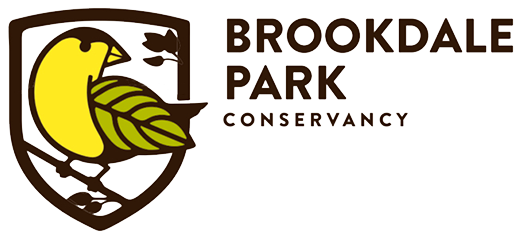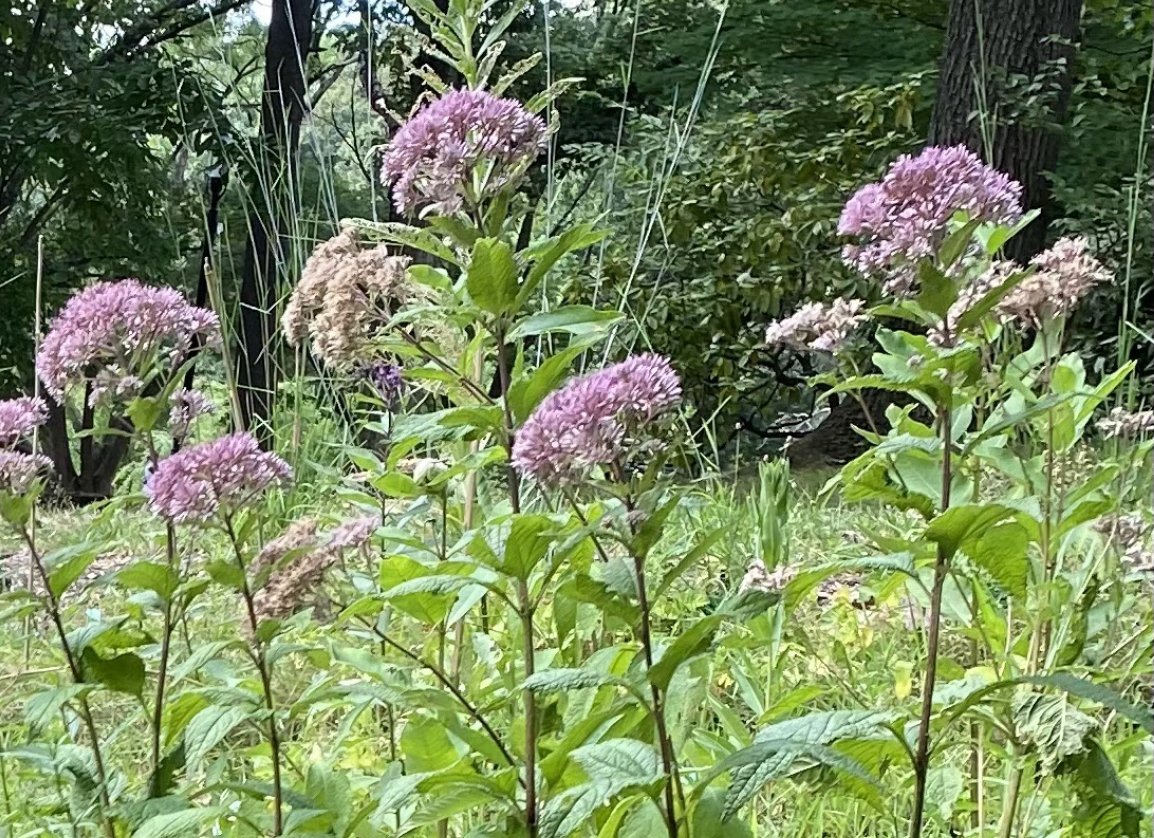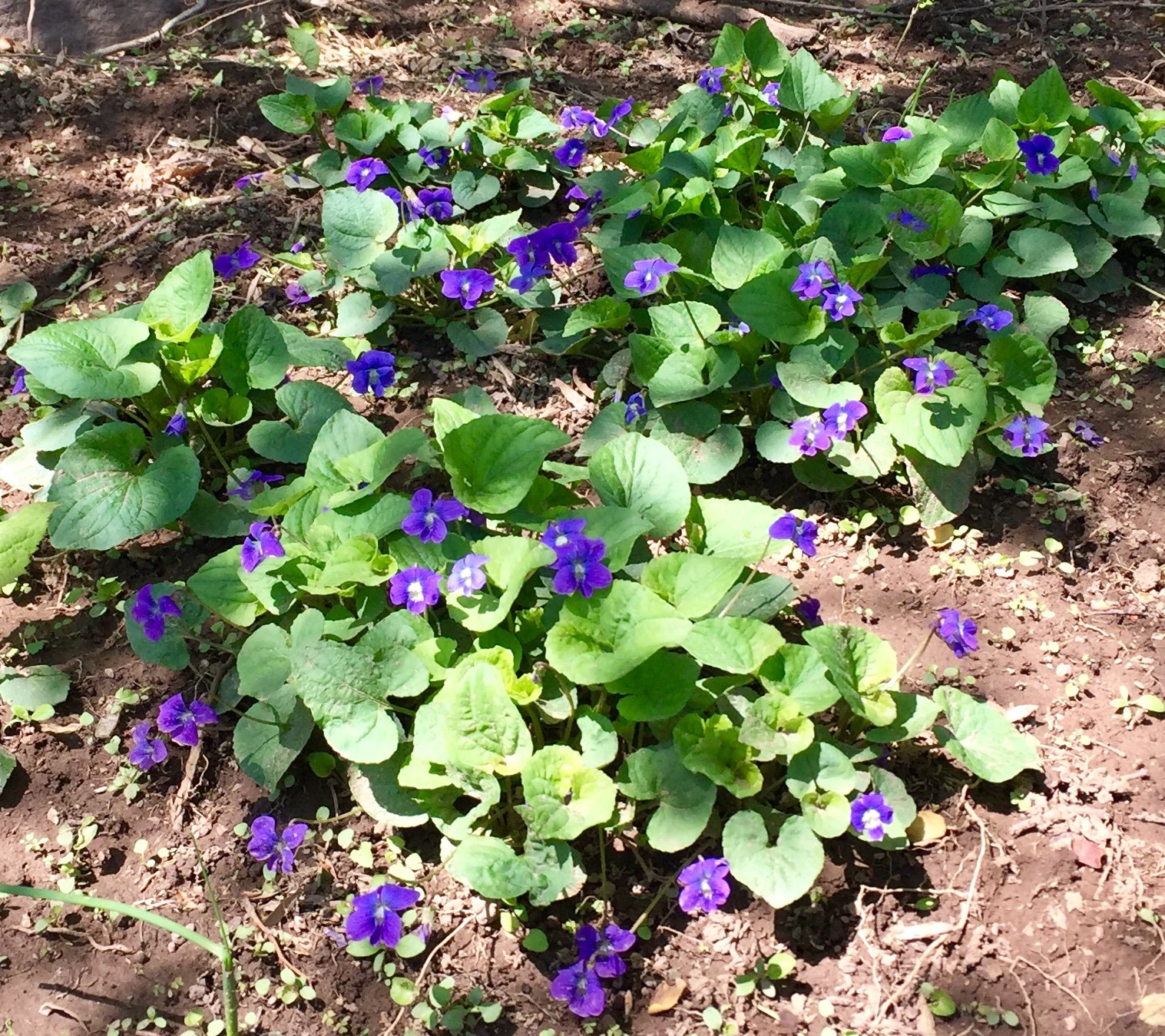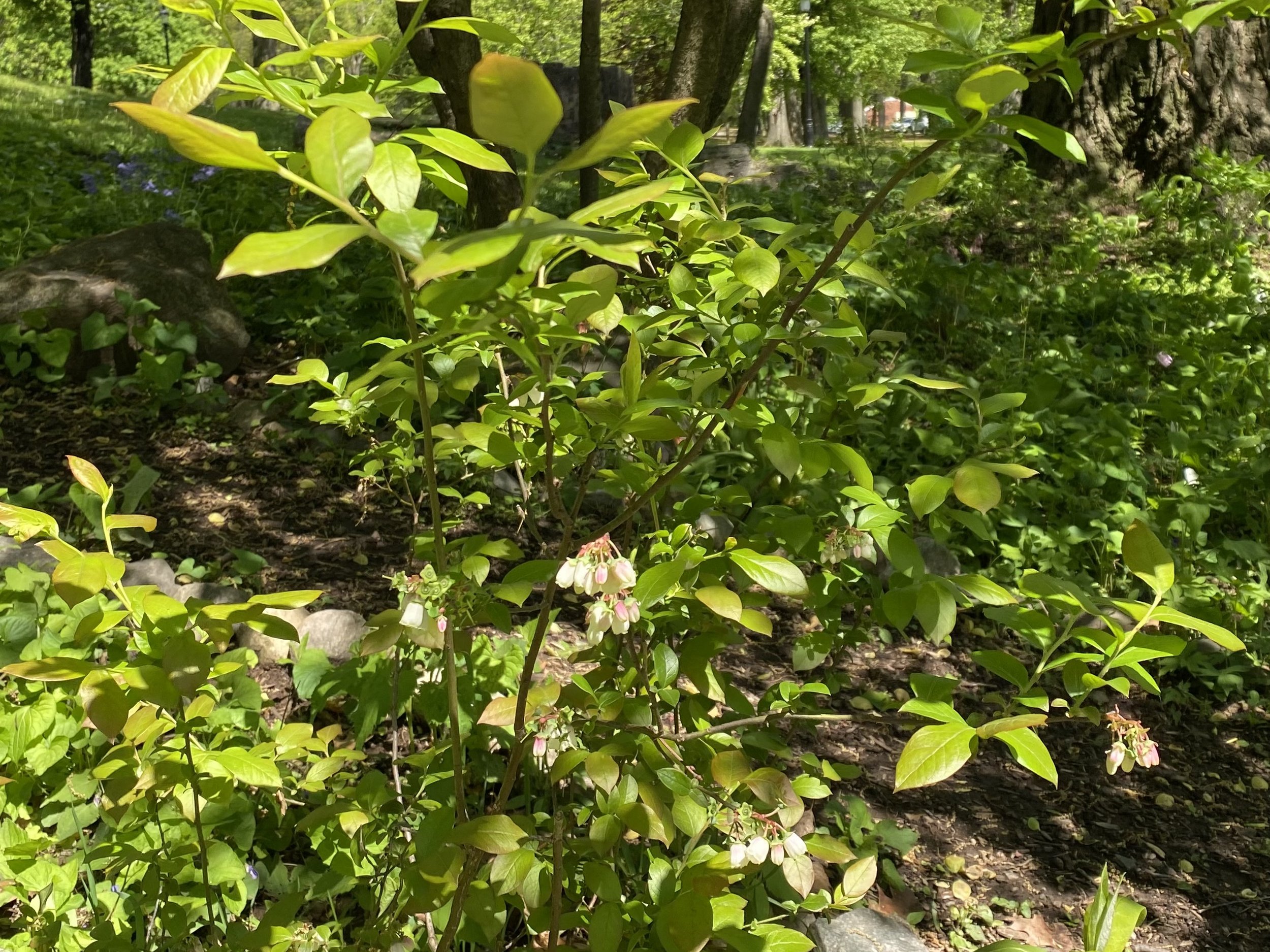milkweed slope
LITTLE BLUESTEM
Schizachyrium scoparium
This ornamental grass gets its name from the blueish color of the base leaf blades in spring. In fall it turns reddish brown which lasts through winter. Small birds love their silvery-white seeds. This plant is best suited for a meadow, a border in masses or as an accent.
Attracts: birds, butterflies, Skippers spotted in PP
Growth: Grass, 2-3’ h, sun, tolerates all soil types, likes dry, drought tolerant, some deer resistance
Blooms: Mid to late summer
Location: Pollinator Patch, Milkweed slope
PENNSYLVANIA SEDGE
Carex Pensylvanica
This green sedge grows in small clumps and spreads through rhizomes to form a ground cover worthy as a lawn substitute for shady areas with light foot traffic. Often spotted near oaks giving it one of its common names, ‘oak sedge’. Blooms in spring and is semi-evergreen.
Attracts: Birds
Growth: Sedge, .5-1’ h, dry soil, shade/partial shade, deer resistant
Blooms: Spring
Location: Milkweed Slope
BLUE WOOD ASTER
Symphyotrichum cordifolium
This late-blooming (late summer-fall) perennial is a much needed nectar source for pollinators in fall. The flowers are a mix of blues and purples. Cutting back the flowers in mid-July will create bushier plants and will prevent it from falling over.
Attracts: Butterflies including the Pearl Crescent seen at the garden
Growth: Perennial, 2-4’, full sun to part shade, tolerates all soil types but prefers moist, rich soils,
Location: Every part of the garden
ASTER, NEW ENGLAND - purple, lavender, pink, & white forms
Symphyotrichum novae-angliae
Large and showy flowers that bloom in late summer into fall. Prune mid-summer to encourage bushiness and to prevent from flopping over. Pairs nicely with goldenrod. It thrives best in moist meadows and woodland’s edge.
Attracts: Butterflies, moths, bees and birds. Host plant to the Pearl Crescent Butterfly
Growth: Perennial, 3-5’ h, Partial sun, moist soil
Location: Pollinator Patch, Milkweed slope
BLUE MIST FLOWER
Conoclinium coelestinum
The compact clusters of blueish white flowers bloom from mid summer until frost. It is an important food source for native bees. In the home garden cutting it back in the middle of the summer will make it bushier. It spreads by rhizomes and will need dividing to keep it in check.
Attracts: Native Bees, butterflies Hosts: Lined Ruby Tiger Moth
Growth: perennial, 1-2’ h, full sun/part shade, dry/moist soil
Bloom: August - October
Location: Pollinator Patch, Milkweed Slope, Woodland Garden
BLAZING STAR, ROUGH
Liatris aspera
This blazing star blooms in the hottest time of the year and has fewer flowers on its spike than other Liatris. The flowers are pollinated by insects with long tongues that can reach the bottom of the tubular flowers. The corms (base of the stems) are a favorite food for rodents - especially voles. A vivid addition to the back of a border.
Attracts: Bees, Butterflies, other insects, Hosts: Flower Moths
Growth: perennial, 2-3’ h, sun, multiple types of soil
Bloom: August - Sept
Location: Pollinator Patch, Milkweed Slope
Columbine, Wild Eastern, Red
Aquilegia canadensis
This versatile beauty does well in beds, borders, woodland’s edges and container pots and is a wildlife magnet. When well placed, Columbine will self seed and form colonies. Plant and watch hummingbirds drink nectar from its bell-shaped flowers.
Attracts: Hummingbirds, bees, butterflies, Hawk moths, birds. Host to Columbine Duskywing Butterfly
Growth: 1-2’h, partial shade, moist soil, deer resistant
Blooms: April, May
Location: Woodland Garden, Milkweed Slope, Shady Slope
Coneflower, Orange
Rudbeckia fulgida
This perennial with its big showy yellow-orange flowers and long bloom time is easy to grow. Leave the seed heads and watch goldfinches swaying in the wind while eating seeds. Plant in masses.
Attracts: Birds bees
Growth: 2-3’h, Sun, moist soil of all types
Blooms: July-October
Location: Pollinator Patch, Milkweed Slope
Coneflower, Pale
Echinacia pallida
The distinct characteristic of this coneflower is its thin, drooping pale purple petals. It blooms a few weeks earlier than the more common purple coneflower and has a long lasting bloom time.
Attracts: Bees, butterflies, birds
Growth: 2-4’h, Sun/part shade, tolerates range of moisture
Blooms: May-July
Location: Pollinator Patch. Milkweed Slope
IRONWEED, NEW YORK
Vernonia noveboracensis
Ironweed offers glorious, tall flowers in late summer that would compliment a stand of asters or offer a contrast to the yellow of late summer goldenrods. This will self-seed with great delight!
Attracts: Bees, Butterflies, Birds for seeds
Growth: perennial, up to 8’, full sun, many soil types
Bloom: Aug-Sept
Location: Pollinator Patch, Milkweed Slope
JACOB’S LADDER
Polemonium reptans
The lovely light blue flowers of this plant bloom for a few weeks but the leaves provide a mounded ground cover all summer long. It will self seed and is a nice addition to a shady border, keeping weeds at bay while providing a pop of color.
Attracts: native bees, honeybees, butterflies and moths
Growth: perennial, 1’h, part shade, moist loamy, rich soil
Bloom: April-May
Location: Milkweed Slope
JOE PYE WEED sweet
Eutrochium purpureum
This tall plant fits best in the back of borders. Hosting many pollinators, it’s a keystone plant in the garden. It is named after Joe Pye, a Native American herbalist who used it to cure a variety of illnesses including typhoid. Research confirms this was the nickname for Joseph Shauquethqueat, a Mohican chief.
Attracts: butterflies, native bees. Host: Ruby Tiger Moth
Growth: perennial, 5-7’ h, full sun/part shade, medium/wet soil, deer resistant
Bloom: July-September
Location: Milkweed Slope
MILKWEED, Common
Asclepius syriaca
Milkweed’s unique flower supports a complicated pollination strategy. First, a visitor’s leg accidentally falls into a crevice in the flower, when it’s extracted a pollen sack attaches to the leg. Milkweeds bank on the insect then going to another milkweed flower, accidentally getting its leg caught again and leaving the pollen sack behind. Orchids have a similar pollination strategy - more details can be found here
Attracts: Bees, Butterflies, Hummingbirds Host plant: Monarch Butterfly
Growth: perennial, -4+’h, sun/part shade, all soil types
Bloom: May-June
Location: Entire Garden
Courtesy James L. Reveal, Lady Bird Johnson Wildflower Center.
MONARDA, Wild Bergamot
Monada fistulosa
This monarda’s showy flowers are as at home in a butterfly or native garden as in a traditional border. These flowers are visited by hummingbirds, once they find the flower in your yard they tend to come back daily. While monarda can get powdery mildew this does not harm the plant or others in the border and seems a small price to pay for hummingbird visits!
Attracts: Hummingbirds, song birds, bees, butterflies
Growth: perennial, 3-4’, sun/part shade , dry soil
Bloom: May-July
Location: Milkweed Slope, Pollinator Patch
Onion, Nodding
Allium cernuum
This plant easily grows in the home garden, it’s tolerant of drought and deer and will even grow near black walnuts. You can transplant these, grow them from seeds in the spring or from bulbs planted in the fall. Unlike other onions, this flower hangs downward on its stalk.
Attracts: Butterflies
Growth: perennial, 1-2’ h, sun/part shade, dry to medium soil
Bloom: July-September
Location: Milkweed Slope
Courtesy W.D. and Dolphia Bransford, Lady Bird Johnson Wildflower Center.
Primrose, Common Evening
Oenothera biennis
This plant has a 2-year lifecycle. In the first year it produces a rosette of leaves (8-16” wide) without flowers. The second year brings on the flower stalk with yellow flowers that open at dusk. The flowers smell lemony and are fertilized by night flying moths or early morning bees. All parts of this plant including the roots were eaten by Native Americans.
Attracts: Moths, bees Hosts: Primrose Moth
Growth: biennial, 4-6’h, sun, well drained soil
Bloom: June-September
Location: Pollinator Patch, Milkweed Slope
Courtesy Robert L. Stone, Lady Bird Johnson Wildflower Center.
Rattlesnake Master
Eryngium yuccifollium
The common name refers to its use in the 1700s for preventing and treating snake bites, but there is no proof of its efficacy. The scientific name describes the long (up to 30”) fibrous leaves that form at the base of this plant. Today this plant and its cultivated varieties are increasingly used as an ornamental plant.
Attracts: wasps, bees, butterflies, flies Hosts: Rattlesnake Master Stem-borer, Seed Eating Moth
Growth: perennial, 4’h, sun, moist soils
Bloom: June-August
Location: Pollinator Patch, Milkweed Slope
Courtesy Stephanie Brundage, Lady Bird Johnson Wildflower Center.
Rose, Virginia
Rosa virginiana
This native rose adds glorious pink flowers, orange rose hips and yellow leaves in the fall to your garden. It is as lovely as any cultivated rose and provides food to wildlife - a winner!
Attracts: birds, bees, hummingbirds
Growth: perennial, 2-4’h, sun, well drained, acidic soil
Bloom: May-June
Location: Milkweed Slope
Senna, Wild
Senna hebecarpa
Senna has an interesting relationship with insects. It’s yellow flowers have pollen which feeds bees but do not have any nectar. The stalk of each leaflet has a gland that secretes nectar which attracts ants, ladybird beetles and flies.
Attracts: bees, ants, ladybird beetles and flies Host plant: Sleepy Orange and Cloudless Sulfur Butterflies, Black Witch Moth
Growth: perennial, 3-4’h, sun, moist, rich soil
Bloom: July-August
Location: Monarch Slope
Snakeroot, White
Ageratina altissima
As one of the latest blooming flowers its nectar is important for bees, butterflies and moths preparing to overwinter or migrate. The milk from cows that eat this plant can cause vomiting, tremors, liver failure and death. Abraham Lincoln’s mother is thought to have died from this “milk sickness”.
Attracts: bees and butterflies,
Growth: perennial, 1-3’h, part shade, moist rich soil
Bloom: August-October
Location: All areas
Sneezeweed
Helenium autumnale
Pinching back these plants in June will give a bushier plant with more flowers. Use it in the back of the border to give height to your garden. Its name comes from past use of dried leaves to create a snuff, which was inhaled in to cause sneezing in order to loosen a head cold.
Attracts: bees, butterflies, other pollinators
Growth: perennial, 3-4’h, sun, wet soil
Bloom: July-September
Location: Milkweed Slope
Violets
Viola sororia
Violets are our state flower and important our ecosystem. Fritillary butterfly larvae eat only violets. While some people prefer a very tidy lawn or flower border, letting violets run through your yard provides color and supports fritillaries. Violets come in a variety of colors, blue, pink, white and bi colored.
Attracts: bees, butterflies, birds Host plant: Grand Spangled Fritillary, Variegated Fritillary Butterflies
Growth: perennial, .5’h, sun/part shade, well-drained soil
Bloom: April-June
Location: Milkweed and Shady Slopes, Woodland Garden
ANNUALS
Zinnias
Zinnia x
These are native to Mexico but as a rich source of food they have space in our garden and are constantly abuzz with visitors. Zinnia are wonderful to grow with children; the seed germinates readily right in your garden, they grow a rainbow of colors, and flowers last for weeks in a vase. While they self seed they are distinctive and easy to control.
Attracts: butterflies, hummingbirds
Growth: annual, 3-4’h, full sun, most soils
Bloom: July-October
Location: Pollinator Patch, Milkweed Slope
SHRUBS & vines
Blueberry, Highbush
Vaccinium corymbosum
This bush is “buzz pollinated” just like the Shooting Star. Pollination by bees is what brings you the delicious blueberries. Nesting birds come by and pick the bushes clean to feed their babies and later will return as a family group. In the fall the brightly colored leaves are glorious.
Attracts: bees, butterflies, birds Host plant: Spring/Summer Azure Butterfly, Striped Hairstreak Butterfly
Growth: shrub, 2-4+’h, sun/part sun, dry soil
Bloom: May
Location: Pollinator Patch, Milkweed Slope
St John’s Wort, Shrubby
Hypericum prolificum
This deer resistant shrub adds 3 season color to your yard and is easy to maintain as a hedge or to control erosion. Its bright yellow flowers are followed by yellow green leaves in the fall and red/brown stems in the winter providing three season interest.
Attracts: bees, butterflies
Growth: shrub, 4’h sun, most soils
Bloom: Late Spring/Early Summer
Location: Milkweed Slope
Coral Honeysuckle
Lonicera sempervirens
This native honeysuckle vine is a winner, plant it in your garden and train it on a fence or trellis to be treated to its red/pink/orange flowers. Hummingbirds find the flowers irresistible and in the fall the seeds are sought after by finches and robins.
Attracts: bees, butterflies, hummingbirds, birds Host plant: Spring Azure butterfly and Snowberry Clearwing moth
Growth: vine, up to 12’ long, sun, most dry soils
Bloom: May-June
Location: Milkweed Slope, Woodland Garden, Shady Slope
Poison Ivy, Eastern
Toxicodendron radicans
Poison ivy can be on a tree, bush or or on the ground. “Leaves of three let it be” is wise advice! The middle leaflet is longer than the two side leaflets. Leaves can be glossy or dull, smooth-edged or toothed. The itch/burn takes between 12 hours and 5 days to develop. You can also be irritated from clothes and other items that touched the ivy. It is best to take care and avoid it. Rutgers has advice to address it in your yard.
Growth: vine, 20+’ l, grows in most soil/light conditions
Bloom: Spring
Location: entire garden



























